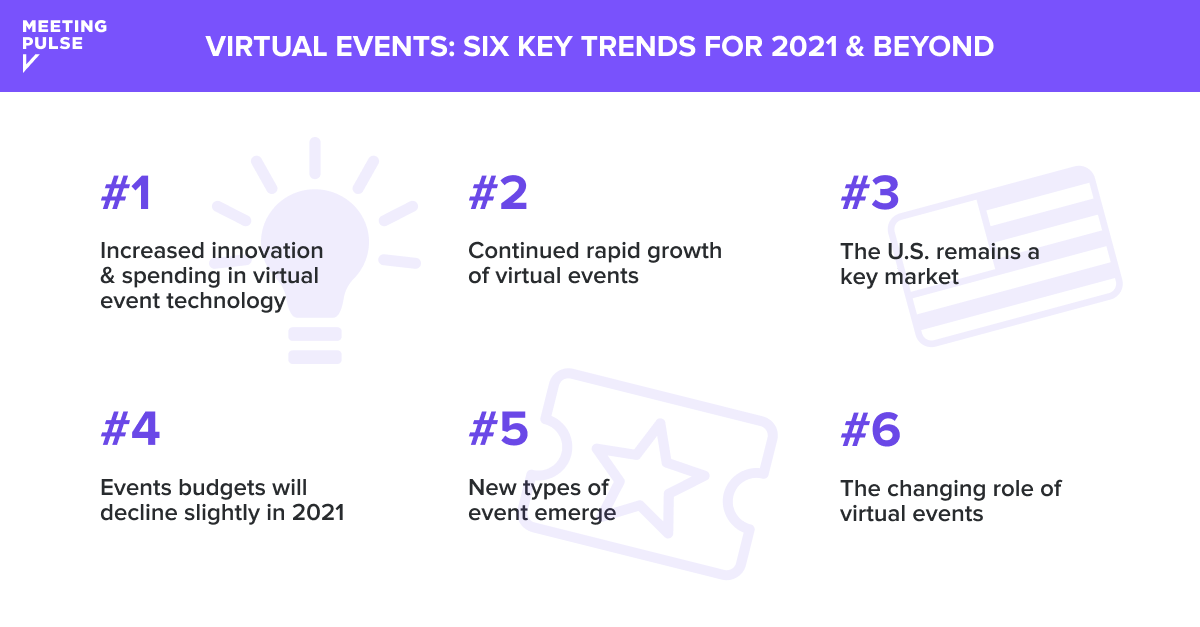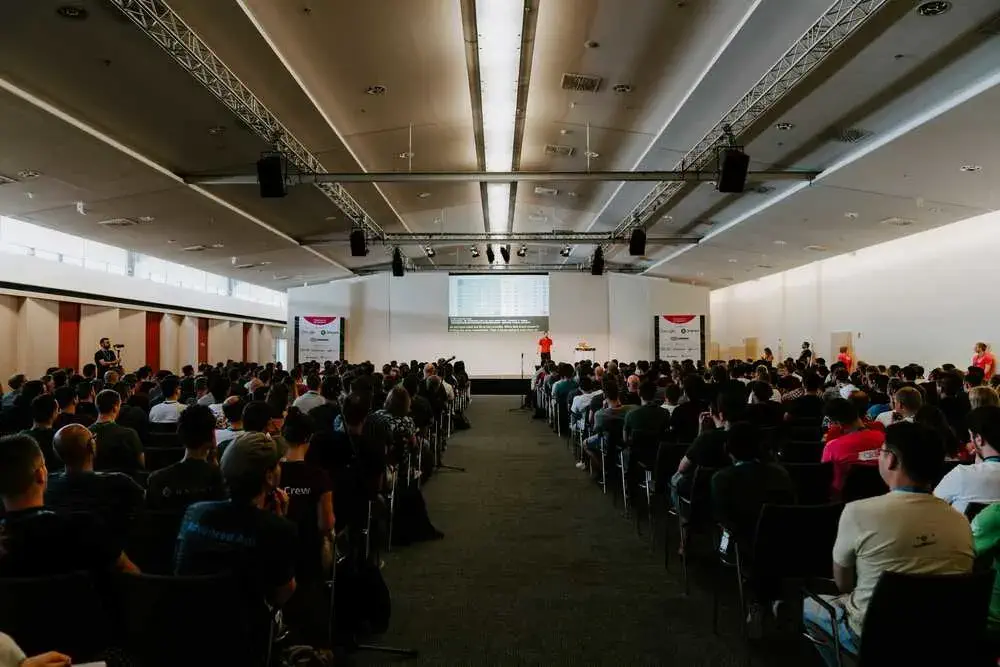Since the emergence of COVID-19, virtual events have become the norm. Now we are starting to see plans for large scale hybrid events as well.
Across the world, event producers are innovating to keep up with this rapidly changing environment. But which trends are here to stay?
Here at MeetingPulse, event producers we work with see virtual events as key to their long-term strategy. They believe virtual events have a lot of advantages: the ability to reach broad audiences, apply new technologies in innovative ways, and to produce more inclusive events that work for everyone.
While the virtual event industry has exploded in the past year, recent research suggests this is only the beginning. In fact, the virtual event industry is forecasted to grow by 10x by 2030 — from $78 Billion today, to a staggering $774 Billion by 2030. If you work in the events industry, it’s crucial to keep up to date with the latest trends to ensure you can ride this wave. Take a look at the stats on these developing trends we think are here to stay:
#1 Increased Innovation & Spending in Virtual Event Technology
The market for virtual event technology continues to grow, and event producers are allocating more money than ever to their technology budgets. A recent study from EventMB found that 41.5% of event professionals are willing to pay up to $5,000 for virtual event tech, with an additional 19% willing to pay more than $15,000.
As events increasingly move toward hybrid or fully virtual approaches, expect these figures to rise. Producing memorable virtual events demands event producers embrace and innovate with technology that helps take their events to the next level.
Related: The 9 Best Virtual Event Software Platforms
#2 Continued Rapid Growth of Virtual Events
Even as the world looks forward to getting back to normal in the coming months, it’s clear that virtual events are here to stay. Though the events industry has been forced to go virtual over the past year, a lot of positive trends have emerged, and virtual and hybrid events will remain a central element of many organizations; event strategies on an ongoing basis.
Recent analysis from Grand View Research projects that the virtual event industry will grow at a compounded annual growth rate of 23.2% between 2020 and 2027, primarily driven by events like trade shows, conferences, sales meetings, and summits moving to digital or hybrid formats.
Virtual events are only going to become more widespread, so it’s important for event producers to be strategic with their event planning and production. To learn more about how to make your event stand out, read our guide to creating a virtual event that attendees will love.
#3 The U.S. Remains a Key Market
According to Mhojhos Research, the U.S. market represents nearly half of the global events industry, and the importance of the American market is likely to be sustained. In total, Americans have about 2.6 Billion events and meetings annually – an average of more than 16 events for every working person. Events and meetings play an important role in the American economy; companies rely on them to announce new products, build relationships with customers, and communicate internally. Huge opportunities exist for event producers operating in the U.S., and there are a wide range of technologies to support all kinds of different events.
#4 Events Budgets Will Decline Slightly in 2021
As businesses continue to face financial pressure and travel difficulties brought on by the pandemic, overall event budgets are forecasted to decline around 6%, per American Express research. The budget cuts are largely driven by spending reductions on travel and optional off-site activities that were previously a key part of in-person events.
While the overall events budgets may decline at some organizations, many are instead reallocating their event budgets into virtual event technologies. 31% of the event professionals surveyed by American Express said they would use additional budget allocation to increase the use of technology at their events. As event budgets are redirected into virtual event platforms and tools, it’s worth considering the best ways to utilize these tools to drive maximum impact. A great starting point for event producers considering these tools is our guide on the top six audience interaction tools for virtual meetings.
#5 New Types of Event Emerge
As the way we meet changes, so do the types of meetings and events we’re attending. Recent research from CVENT breaks the virtual event market down into four main types of events:
- Webinars — educational, often featuring Q&A sessions
- Virtual Conferences — a variety of formats; including keynotes, breakout sessions, and panel discussions
- Internal Hybrid Events — town halls, sales kickoffs, training programs, department meetings
- External Hybrid Events — user and industry conferences
Hosting events in these new formats requires flexible technological solutions. One technology to consider for your next event is MeetingPulse, which enables event producers to better engage with their audiences and create deeper connections.
Sign up for a free trial of MeetingPulse now.
#6 The Changing Role of Virtual Events
In addition to the four types of virtual events outlined above, recent research published by Grand View Research also explored the reasons organizations host virtual events. The research discovered that virtual events have four primary functions:
- Communication
- Recruitment
- Sales & Marketing
- Training & Education
The most common purpose of virtual events is Communication, representing roughly 35% of the market. Examples of these types of events would include corporate meetings, or industry conferences. But rapid growth is forecasted among all event purposes, with Sales & Marketing among the fastest growing. As organizations lean into these new opportunities, it’s important that they embrace the right technologies to support their goals.
It’s an exciting time to be an events professional. The industry is set for fast-paced growth, with no shortage of innovation and new opportunities. It’s clear that virtual meetings, and the technologies that support them, are going to play a major role over the next few years. Event producers can get ahead of the curve by exploring exciting new technologies that enable them to delight attendees with memorable virtual and hybrid events.
One of the best ways to take virtual meetings to the next level is MeetingPulse. It’s an audience engagement tool that can be used for all kinds of events, and includes advanced functions like moderated Q&A, live polling, and brainstorming tools that will help you ace your next virtual event.


















